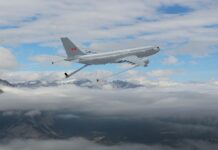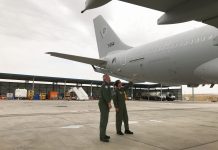Speed, mobility and firepower are more important than ever on the battlefield. Attack helicopters unite all three characteristics like no other land warfare weapon system.
The attack helicopter has its roots in the helicopter gunships – utility helicopters augmented with air-to-ground weapons – used in various conflicts of the 1950s and 1960s. Dedicated attack helicopter programmes emerged in the late 1960s and the 1970s, beginning with the US Army’s AH-1 Cobra which first deployed to Vietnam in 1967.
Operational priorities have evolved since then. While attack helicopters retain a close-air-support (CAS) role for frontline infantry, they now also count anti-tank, anti-artillery, and counter-air-defence as top-line missions.
North America
AH-64 Apache
The AH-64 Apache is the most ubiquitous western attack helicopter, with some 1,200 units currently operational in 16 nations, and standing orders by several additional nations. Almost all aircraft in service today belong to the AH-64D Longbow variant (introduced in 1997) or the AH-64E Guardian (so designated in 2012).

Credit: US Army
The twin-engine Apache is widely considered the most powerful attack helicopter in the world. Its weapons loadout includes the fixed M230 30mm cannon and a selection of Hydra-70 70 mm (2.75-inch) rockets, AGM-114 Hellfire anti-tank guided missiles (ATGM) or Joint Air to Ground (JAGM) missiles, AGM-122 anti-radiation missiles, as well as AIM-9 Sidewinder, AIM-92 Stinger, and Mistral, air-to-air missiles. This enables the AH-64 to engage enemy helicopters and UAVs as well as the complete spectrum of ground targets including main battle tanks (MBT), mobile and fixed radars and missile launchers, hardened and soft structures, and personnel. For tank-hunting missions the Apache carries up to 16 ATGMs plus two air-to-air missiles for self-defence. Sensors on both variants include a day TV system, thermal imaging sight, direct view optics, and the AN/APG-78 Longbow millimetre-wave radar. The distinctive Longbow fire control radar can detect and classify up to 128 potential targets, and engage 16 targets simultaneously; an embedded radio modem enables sharing of radar data with other helicopters and ground forces. Placing the radar atop the rotor blades enables the helicopter to acquire and engage targets while the body of the aircraft remains just below an obstacle such as a treeline or building, taking maximum advantage of the aircraft’s nap-of-the-earth (NOE) flying capabilities.
The currently produced iteration is the Guardian version 6 or AH-64Ev6, which began fielding in 2021. It features enhanced capabilities designed for Multi-Domain Operations (MDO), including upgraded sensors, enhanced engagement range, improved networking and a Joint Tactical Information Distribution System (JTIDS) to exchange sensor and targeting data with other platforms via Link-16. The AH-64E’s Manned-UnManned Teaming (MUM-T) options have also been enhanced on the v6; the helicopter crew can control the flight path and the sensors of cooperating UAVs, receive UAV footage in real-time, and stream that video to ground systems to immediately update common situational awareness and facilitate tactical decision making throughout the joint force.
In 2022 Boeing presented the concept for a modernised Apache building on the AH-64Ev6. It would feature drivetrain upgrades; greater interoperability through mission systems, sensors and sensor fusion, and more resilient cross-domain connectivity; and new payload options including electronic warfare (EW) and, potentially, directed energy weapon systems. To date no service is known to be considering acquisition of this future variant.
AH-1Z Viper
The US Marine Corps (USMC) took delivery of its 189th and final AH-1Z Viper attack helicopter in November 2022. The twin-engine aircraft is currently being acquired in small numbers by Bahrain and the Czech Republic. It is expected to remain in service for the next four decades.
The Viper, which is derived from and replaced the USMC’s AH-1W SuperCobra, entered Low-Rate Initial Production (LRIP) in 2003 and achieved Initial Operating Capability (IOC) in 2011. The AH-1Z deploys with USMC expeditionary units aboard amphibious warships, and can also operate from fixed or temporary operating bases on land. The USMC defines three core missions: air-to-ground fire support (including suppression of enemy defences ahead of amphibious landings), aerial reconnaissance, and escort of advancing ground forces. The Viper also provides defensive airpower for amphibious warships, locating enemy warships over-the-horizon and engaging them with air-to-ground precision weapons.
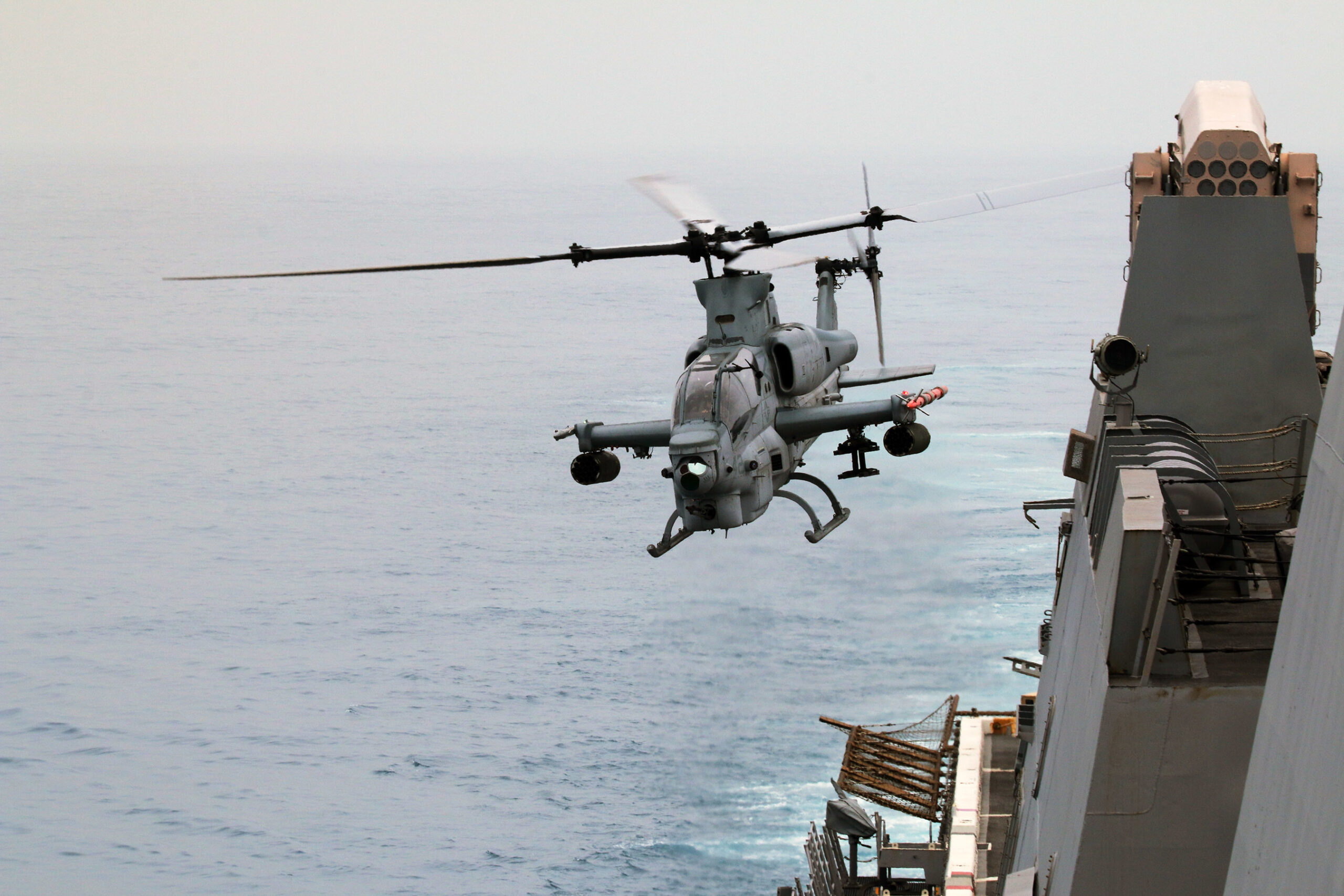
Like many attack helicopters it features a narrow hull to reduce the radar cross-section and the likelihood of enemy weapon impact. The aircraft achieves an airspeed of 380 km/h (200 knots) and has a combat radius of 243 km (131 NM). A standard weapons loadout includes the bow-mounted 20 mm M197 Gatling gun, 16 air-to-ground missiles including Hellfire and JAGM, guided or unguided 70 mm rockets, and two Sidewinder air-to-air missiles. The nose-mounted third-generation Targeted Sight System (TSS) multi-sensor optronic infrared fire control system permits long-range identification of targets while the integrated weapons management system provides precision attack capability.
MH-60L DAP / AH-6M Little Bird
The US Army’s 160th Special Operations Aviation Regiment (160th SOAR) maintains two dedicated assault helicopter types.
The MH-60L Direct Action Penetrator (DAP), sometimes also termed the ‘Defensive Armed Penetrator’, is a specially configured Black Hawk helicopter tasked with armed escort and fire support for special operations forces. The day and night, all-weather capable aircraft achieves a cruise speed of 222 km/h (120 knots) and a dash speed of 330 km/h (178 knots); its mission range is 778 km (450 NM), which can be extended through aerial refuelling.
Avionics and self-protection systems include terrain following radar, laser- and radar warning receivers, and AN/AAQ-16D AESOP FLIR with integrated laser targeting system. Wing stubs have been added to the fuselage to provide weapons hardpoints. The DAP deploys a variety of offensive weapon systems in area-fires or precision-fire mode. Options include the 30 mm M230 chain gun, the 12.7 mm GAU-19 Gatling gun, the 7.62 mm M134 minigun, 70 mm rockets, Hellfire anti-armour missiles and Stinger air-to-air missiles. Additionally, pintle-mounted miniguns can be emplaced at the cabin’s sliding doors.
The AH-M6 Little Bird light attack helicopter is deployed for CAS of ground forces, direct action missions to destroy armoured and soft ground targets, and escort of special operations/assault carrier helicopters. Like its sister aircraft, the MH-M6 Little Bird special operations light transport aircraft, the AH-6M is derived from the civilian McDonnell Douglas 530. It is small enough to be transported to its operational zone by C-130 or comparable airlifters, and reconfigured for flight within minimal time.
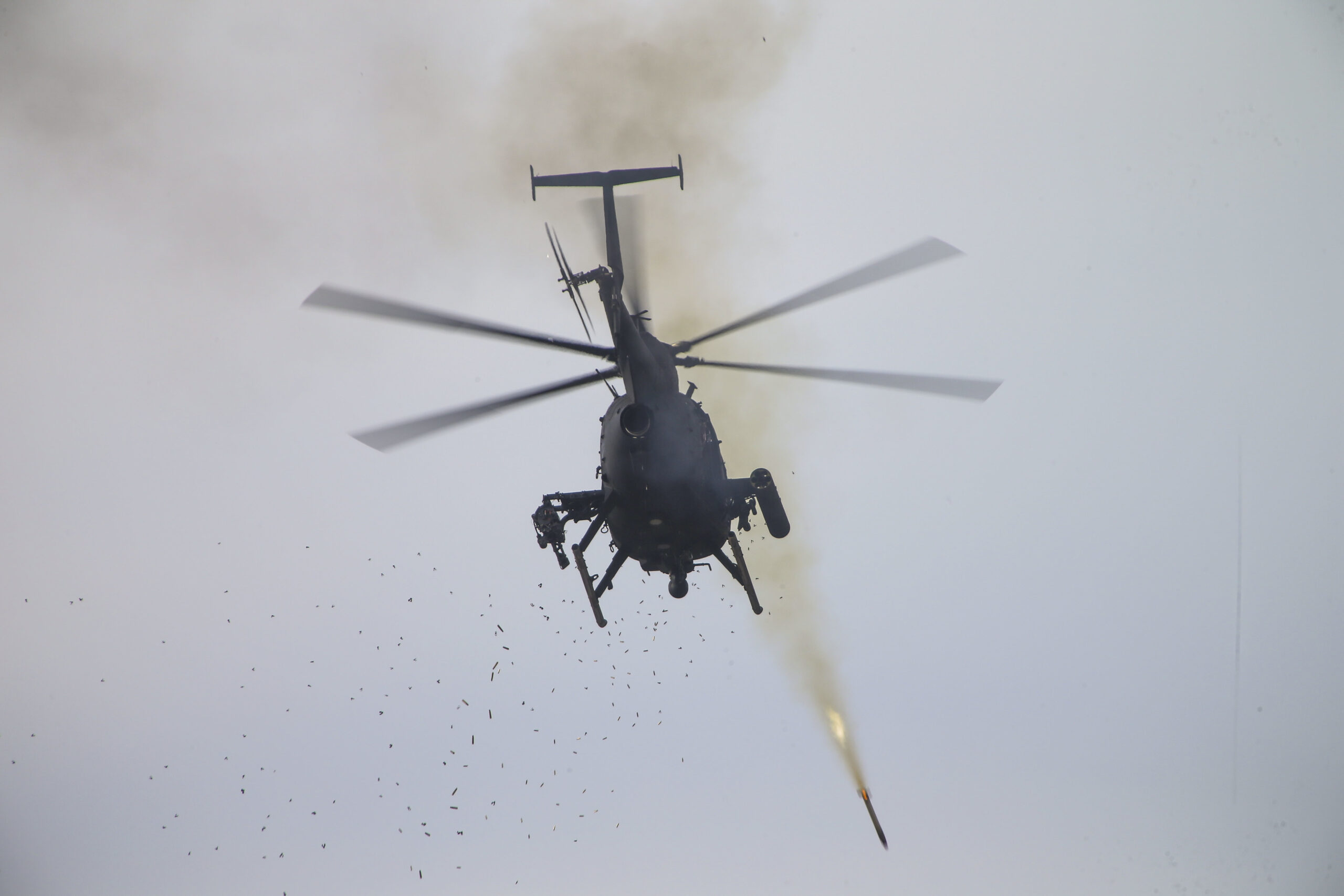
Credit: USMC/SSGT Arthur Shvartsberg
Pilots praise its exceptional manoeuvrability and stability during combat and NOE flight. The single-engine helicopter’s two pilots sit side by side. Aerial performance includes maximum cruising speeds of 233 km/h (126 knots) and a range of 333 km (180 NM). Mission systems include secure UHF, VHF, and SATCOM communications, Forward Looking InfraRed (FLIR) sensors, and a combination of weapons options including 70 mm rocket pods, the GAU-19 and M134 automatic weapons, AGM-114 and AIM-92 missiles. The Pentagon is currently procuring Boeing’s most recent iteration, the AH-6 Block III. It incorporates major elements of the AH-64E avionics technology including the glass cockpit and similar targeting sensors. It also features a new, six-blade rotor system. The US Army plans to operate the AH-6 into the 2030s. Boeing also produces an export variant designated the AH-6i.
FARA
The US Army’s Future Attack and Reconnaissance Aircraft (FARA) programme is slated for fielding circa 2030. In the armed reconnaissance primary mission, FARA is expected to locate and neutralise enemy air defence and long-range fires forces using air-to-ground weapons including Hellfire and JAGM missiles. A 20 mm chain gun in a bow-mounted turret will provide a 360° field of fire with 60° elevation coverage, irrespective of the aircraft’s direction of travel. Advanced avionics, communications, networking and targeting systems will provide high manoeuvrability, survivability, and lethality.
Europe/NATO
Tiger HAD/MkIII
The Eurocopter Tiger attack helicopter achieved operational readiness with the French and German armed forces in 2008. The four-bladed, twin-engine helicopter was subsequently acquired by Australia and Spain, with each nations’ aircraft being customised to meet operator demands. Approximately 180 have been delivered to date. From the beginning the Tiger has been considered one of the most advanced attack helicopters, with stealth technology and a digital cockpit incorporated into the first generation.
The mission spectrum includes CAS for ground and special operations forces, direct action/search and destroy missions, armed reconnaissance, air or ground escort, air-to-air combat, and command and control (C2). The currently produced Tiger HAD Block II variant (Hélicoptère d’Appui Destruction; ENG: Support and Destruction Helicopter) can also operate from ships and in the maritime domain. External fuel tanks can be mounted to double mission endurance to five hours.
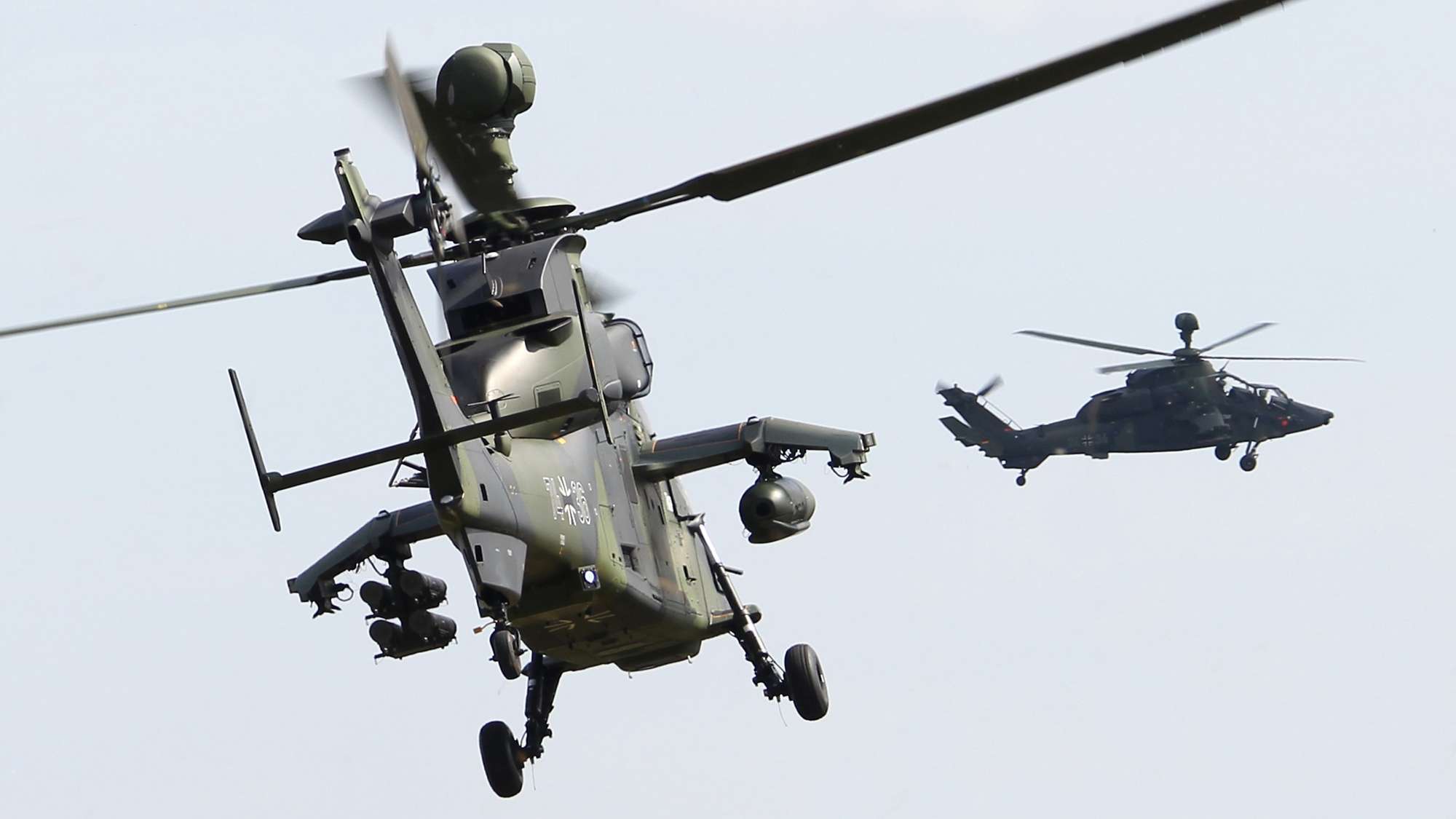
HAD II avionics include: the EUROGRID battlefield management and digital map display systems; integrated radio, SATCOM and data transfer links to communicate with rotary and fixed-wing aircraft and land forces; and a high-authority 4-axis digital automatic flight control system. Gyro-stabilised roof-mounted sensors include a TV camera, thermal imager, laser rangefinder, laser designator, and a laser spot tracker capable of simultaneously following up to four targets. Roof-mounted sights are cued to the pilot helmet. The defensive EW system includes laser, radar, and missile warning receivers.
Hardpoint-mounted armament includes ATGMs, guided and unguided 68 mm and 70 mm rockets, air-to-air missiles, and pod-mounted 12.7 mm heavy machine guns. With the exception of Germany’s UHT (Unterstützungshubschrauber Tiger; ENG: Support Helicopter Tiger) variant which is optimised for anti-armour operations, the Tiger also has a chin-mounted 30 mm chain gun which is optionally linked to the roof-mounted sensors or the crew’s helmet-mounted displays to optimise acquisition of ground and aerial targets.
Airbus Helicopters is currently developing the Tiger MkIII upgrade which will refurbish in-service aircraft, optimising them for networked and multi-domain operations (MDO). Airbus expects to equip the MkIII across the board with next-generation weapons, sensors and targeting systems. A new digital avionics suite, battle management system and tactical data management system, coupled with new 25.4 cm (10 inch) cockpit displays, will reduce crew workload and streamline flight/combat operations. The MkIII will improve on its predecessors’ interoperability with other aircraft and ground forces through enhanced real-time sharing of threat and mission data and situational awareness. It will also be MUM-T capable, extending the manned aircraft’s detection range. The upgrade will keep the Tiger operational beyond 2045.
France and Spain officially launched the MkIII programme in May 2022, following the March 2022 contract signing between Airbus and the European acquisition agency Organisation for Joint Armament Cooperation (OCCAR) as representative of both nations. First flight is expected in 2025, with deliveries to begin in 2029 (France) and 2030 (Spain). Germany has been invited to join the programme but has not yet announced a decision. Airbus is discounting recent French press speculation that Paris might scale back its plans, opting for a simpler and cheaper “MkII+” upgrade. Paris’ January 2023 announcement of plans to boost defence spending by one-third would support confidence in a French commitment to the full modernisation programme.
AW 249
Leonardo is developing the AW249 to replace the Italian Army’s AH-129 attack helicopter which was introduced in 1990. The new helicopter’s official Italian Army designation will be AH-249. The current contract, initiated in 2017, covers the initial prototype and an additional three pre-series units, which will be converted to the final operational configuration once serial production is approved. The Italian Army’s requirement is for 48 aircraft.
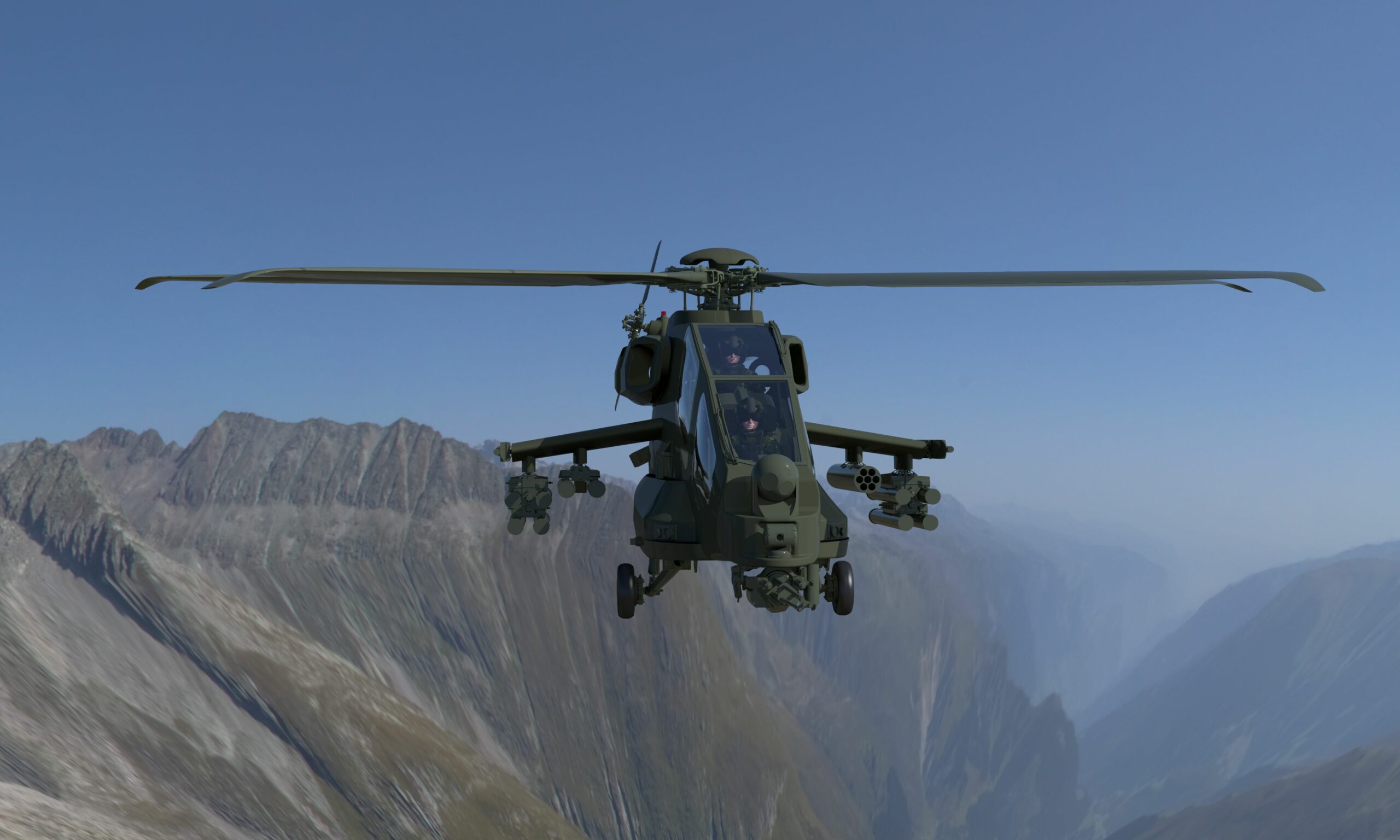
Leonardo states that the AW249 is being designed to conduct network-centric operations with “state-of-the-art communications and an advanced battlespace management system. The mission system will enhance situational awareness, reduce pilot workload and increase safety.” The open systems architecture will permit regular upgrades, growth and modernisation over the helicopter’s circa three-decade service life. The networking architecture will include MUM-T compatibility. Helmet-mounted displays and large area displays at both seats of the tandem-built cockpit will facilitate processing of operational data. While not a low-observable aircraft, the AW249 is being designed to have reduced radar and infrared signatures compared to its predecessors.
The multi-mission aircraft will be classified as NEES (Nuovo Elicottero da Esplorazione e Scorta – New Exploration and Escort Helicopter), and conduct combat, CAS, and escort missions. Shipboard operations will also be possible. The AW249 will utilise the same Rafael Toplite targeting system as the current AW129D configuration. Payload capacity of the six underwing hardpoints will reportedly be double that of the AH-129. Armament will include a chin-mounted 20 mm cannon turret, air-to-ground and air-to-air missiles, and guided/unguided rockets. Hardpoints can also accommodate external fuel tanks to extend the standard three-hour mission endurance.
First flight of the prototype was conducted in August 2022. According to Leonardo, the development and testing programme remains on schedule. Replacement of the AH-129 is slated to commence in 2025. The AW249 will be available for export. In December 2022 Italy announced plans to finalise a contract by mid-2023 to sell seven units to Algeria, the first foreign customer.
T129/T929 ATAK
The medium-weight T129 attack and armed reconnaissance helicopter was derived from the Italian AH-129. Jointly developed by Turkish Aerospace Industries (TAI) and AgustaWestland of Italy under a 2007 contract, the T129 replaced numerous mission systems and weapons with domestically produced Turkish equipment. The mission profile runs the gamut from escort to urban warfare to deep strike and suppression of enemy air defence (SEAD). The T129 was introduced into the Turkish Army in 2014. It is optimised for ‘hot and high’ operating conditions, improving the suitability for missions in non-temperate zones, and is being marketed internationally. Deliveries to the Phillippines are ongoing. In January 2023, the Nigerian government announced that deliveries were pending, while several Middle Eastern nations and Pakistan have orders pending.

TAI is currently developing the T929 ATAK 2 to augment the T129. The 10 tonne ATAK 2 will have double the takeoff weight of the T129, and is designed to fill the Turkish armed forces requirement for a heavy attack helicopter. Unlike the smaller helicopter, it is a purely domestic design, and will be armed with a variety of Turkish munitions including UMTAS ATGMs and Cirit 70mm laser-guided missiles; payload capacity will be circa 1,500 kg.
Defensive systems include missile warning sensors and a tail-mounted directed infra-red counter-measures (DIRCM) system to break the target lock of heat-seeking missiles. The T929 is destined to serve with both the army and the navy; in the latter role it will deploy aboard the amphibious assault ship TCG Anadolu. The mission profile includes attack, CAS, aerial warfare, reconnaissance, and EW. TAI hopes to achieve maiden flight of the prototype in 2023, with the goal of introducing the new aircraft into service in 2025.
Whether this is realistic remains to be seen given TAI’s decision to utilise TV3-117 turboshaft engines procured from Ukraine’s Motor Sich. The June 2021 contract with Motor Sich called for 14 engines to be delivered between September 2022 and 2025, enough to equip seven helicopters.
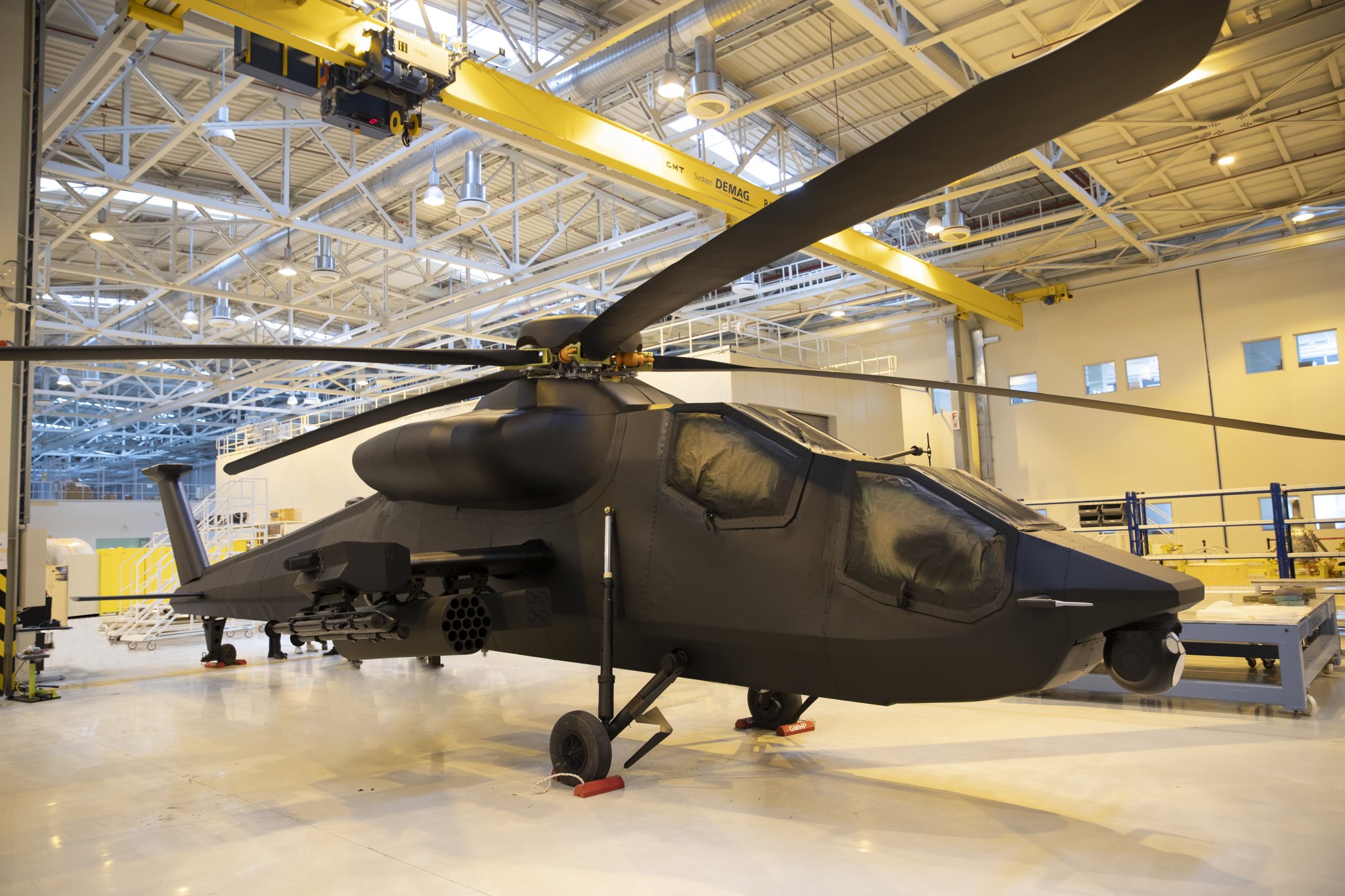
India
Prachand LCH
The Indian Army and Indian Air Force (IAF) formally inducted the Prachand Light Combat Helicopter (LCH) into service in late September and early October 2022, respectively. The indigenously-developed Prachand weighs in at 5.8 tonnes, and is primarily designed for operations along the Himalayan border with China. According to the Indian government, the twin-engine aircraft is the only attack helicopter capable of taking off and landing at 5,000 m altitudes with a heavy payload and fuel load, and has a combat service ceiling of 5,500 m. The mission profile encompasses combat search and rescue, SEAD, counterinsurgency operations, support for ground forces, and destruction of tanks as well as fortified structures. Another priority mission capability for which the LCH was consciously designed is defeat of enemy helicopters and UAVs.

Credit: Government of India
Approximately half of the aircraft components and mission systems are indigenous. The same holds for weapon systems which include cluster bombs, the 3rd-generation Helina and Druhvastra ATGMs, but also the Nexter THL-20 chin-turret and M621 20 mm cannon as well as Mistral 2 air-to-air missiles. Air-to-air engagements utilise helmet mounted sighting to maximise speed and precision. Armour-plated sides as well as reduced visual, aural, radar and infrared signatures contribute to aircraft survivability.
The LCH is the result of a two-decade long development programme which saw the first flight of the prototype in 2010. The aircraft is currently in LRIP, and Hindustan Aerospace Ltd (HAL) is due to supply the IAF with 65 units, and the Indian Army with 95 units. HAL is also offering the helicopter for export. Although the Prachand is considered mission ready, HAL expects to continue upgrading the system while bringing the indigenous component to 55%. It remains unclear what exactly is planned here. In an 8 February 2023 review in the EuraAsian Times, retired IAF Sqdn Ldr Vijainder Thakur emphasised the lack of full-scale networking and MUM-T capability as a shortcoming on the modern battlefield. He also noted that the lack of an all-weather capable radar will limit the LCH’s operations under degraded visibility.
21st Century Force Multipliers
There are currently some 3,000 attack helicopters in service with over 70 users worldwide. The high-intensity battlefield of the 21st century, marked by distributed operations, long-range fires, and rapid movement of forces will place a premium on attack helicopters in both offensive and force protection missions. Furthermore, the evolution of sophisticated air-defence systems puts in question the ability of fixed wing tactical aircraft to operate during the early days of a conflict. Here, too, attack helicopters assume the burden of CAS for ground forces as well as degrading enemy air defences through direct action as well as by providing target data for friendly long-range fires, ultimately opening operational corridors for fighter and bomber aircraft. While helicopter gunships and attack helicopters have made major contributions to military operations since the Vietnam War, and figured into Cold War planning on both sides of the Iron Curtain, their importance is greater now than ever before.
Sidney E. Dean



